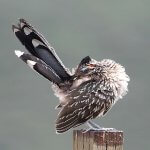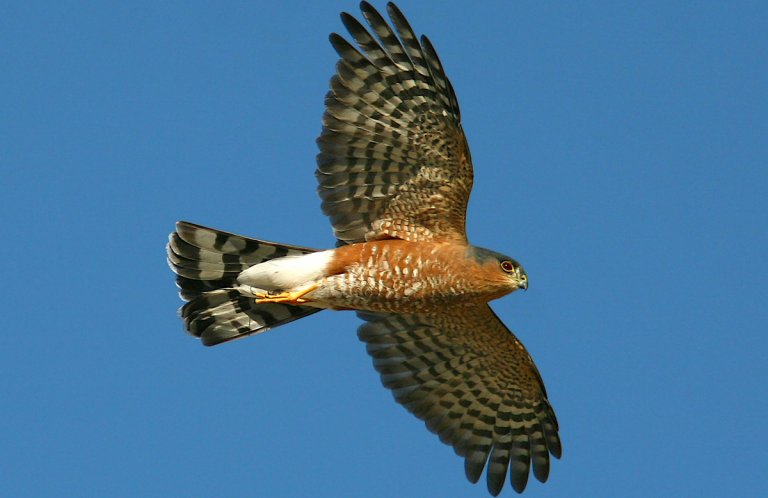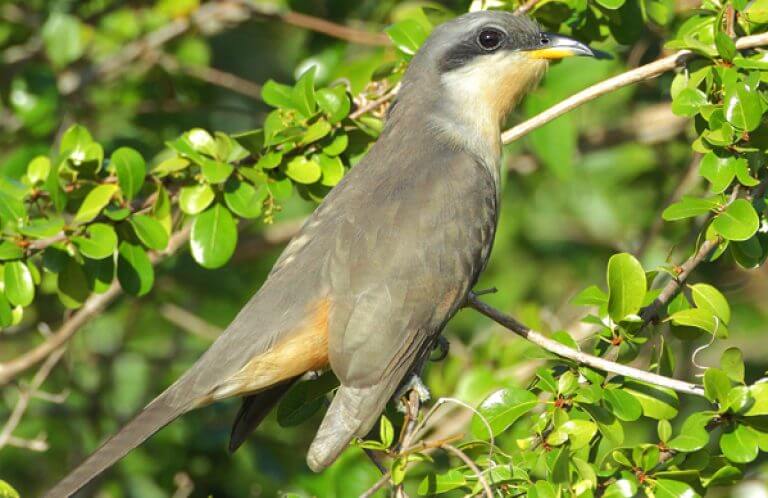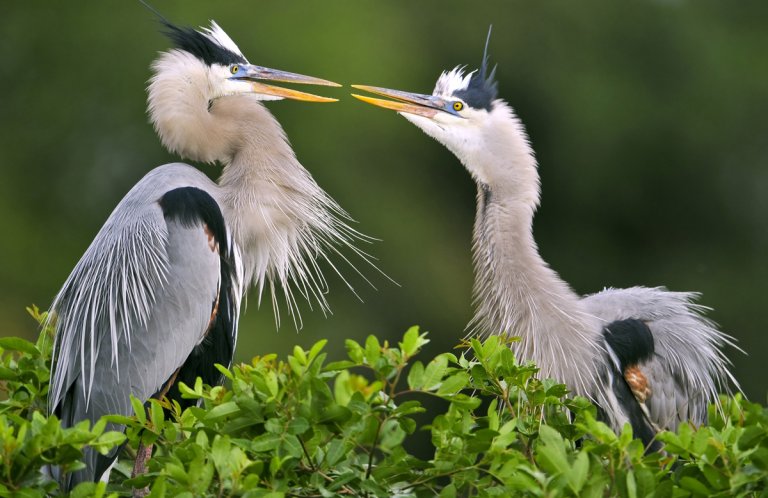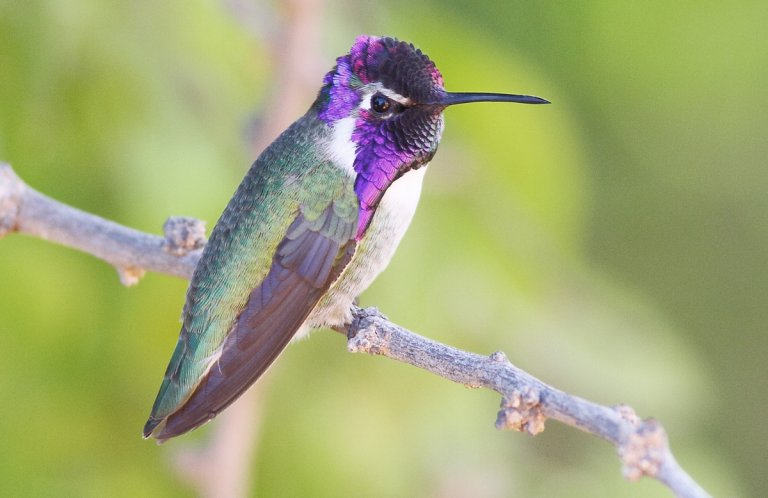About
The Greater Roadrunner belongs to a large avian family, the Cuculidae, which includes the Yellow-billed and Mangrove Cuckoos as well as larger, more terrestrial species such as the Rufous-vented Ground-Cuckoo of Central and South America. The Greater Roadrunner's scientific name, which translates to "Californian earth-cuckoo," shows its affinity with this latter group. It's the only ground cuckoo found in North America.
This charismatic cuckoo is also called chaparral cock, snake killer, paisano, and medicine bird. It's the basis for a popular Warner Brothers cartoon character, a frequent team mascot, and is the state bird of New Mexico.
Instantly recognizable, the Greater Roadrunner has a shaggy brown crest, streaky brown and white plumage, a long, dark tail, and a bare patch of orange and blue skin behind each eye. Its long stout beak has a hooked tip that makes it a formidable hunter. Its rather small wings make the Greater Roadrunner a reluctant flier; it prefers to walk or run along the ground, where it can reach speeds of up to 20 mph!
The Greater Roadrunner typically inhabits arid areas with extreme temperature swings. It has developed several adaptations to cope with this sometimes-punishing environment — one in particular shared by many seabirds.
Adaptations for Aridity
Like seabirds ranging from the Laysan Albatross to the Bonin Petrel, the Greater Roadrunner has special glands above and behind its eyes that remove the excess salt from its blood, allowing it to conserve water, a necessity in its often-arid surroundings.
The Greater Roadrunner has other physiological and behavioral adaptations to hot, dry regions. It copes with high heat through evaporative water loss from its respiratory system and skin, as well as by gular fluttering (a heat-dissipating strategy also used by water birds such as the Brown Pelican and Great Blue Heron) and extending its wings to expose the scantily-feathered axillary (armpit) regions. The roadrunner also saves water by reabsorbing the mucosa (moist tissue lining) from various parts of its body. It rests in the shade during the hottest parts of the day, another way to conserve water and energy.
During cold nights, the Greater Roadrunner conserves energy by entering a state of torpor (lowering core body temperature), a strategy seen in other species ranging from the Black-capped Chickadee to the Costa's Hummingbird. It also fluffs its feathers to reduce heat loss. After a cold night, the roadrunner sunbathes to raise its core temperature again, spreading its wings and ruffling its back and head feathers to expose its black skin, which maximizes heat absorption.
Songs and Sounds
No beep-beeps here! The most frequently heard Greater Roadrunner vocalization is a slow, descending series of low coos made by the male. He typically sings early in the morning, perched atop a fence post, dead tree or cactus. The female Greater Roadrunner voices a rapid series of sharp, short yelps, often compared to a coyote's bark.
Listen to a male and female vocalizing here:
Breeding and Feeding
The Greater Roadrunner is monogamous and forms long-term pair bonds. Pairs engage in elaborate courtship displays that include chasing, tail wagging, and play-fighting. The male will present nesting materials or food to his mate during courtship.
Both the male and female work on their nest; the male collecting suitable sticks and other materials and the female doing the building. The platform nest is hidden in the shade amid a thorny bush, small tree, or cactus, around 3-10 feet above ground. The nest is lined with grasses, feathers, snakeskin, roots, and other soft materials. A pair may begin several “starter” nests before a final site is selected. Old nests may be reused in subsequent years or serve as winter roosts.
The female Greater Roadrunner lays a clutch of 3-6 eggs, which both parents take turns brooding for several weeks. The chicks fledge approximately two weeks after hatching. Fledgling roadrunners remain with their parents for another several months. A roadrunner pair may be able to raise a second brood during years when food is abundant.
An Opportunistic Omnivore
The Greater Roadrunner is an omnivorous and opportunistic hunter, using speed and surprise to capture prey. It may flash the white spots on its wings to startle its quarry into movement or wait quietly for unwary prey to come near. Once it captures prey, the roadrunner beats it against the ground or other hard surface to subdue it.

The Greater Roadrunner eats anything it can catch, including insects, spiders, scorpions, rodents, small birds (including hummingbirds), lizards, snakes, and bats. It will also take plant material such as fruit and seeds. It readily feeds on carrion, and routinely takes bird eggs, nestlings, and sometimes even its own young.
Like a Sharp-shinned or Cooper's Hawk, this canny cuckoo will lurk near backyard feeders to capture small birds. It will also prey upon birds caught in mist nets or banding traps.
Several roadrunners may team up to kill a snake, one distracting the reptile while the other kills it with a stab to the head.
Region and Range
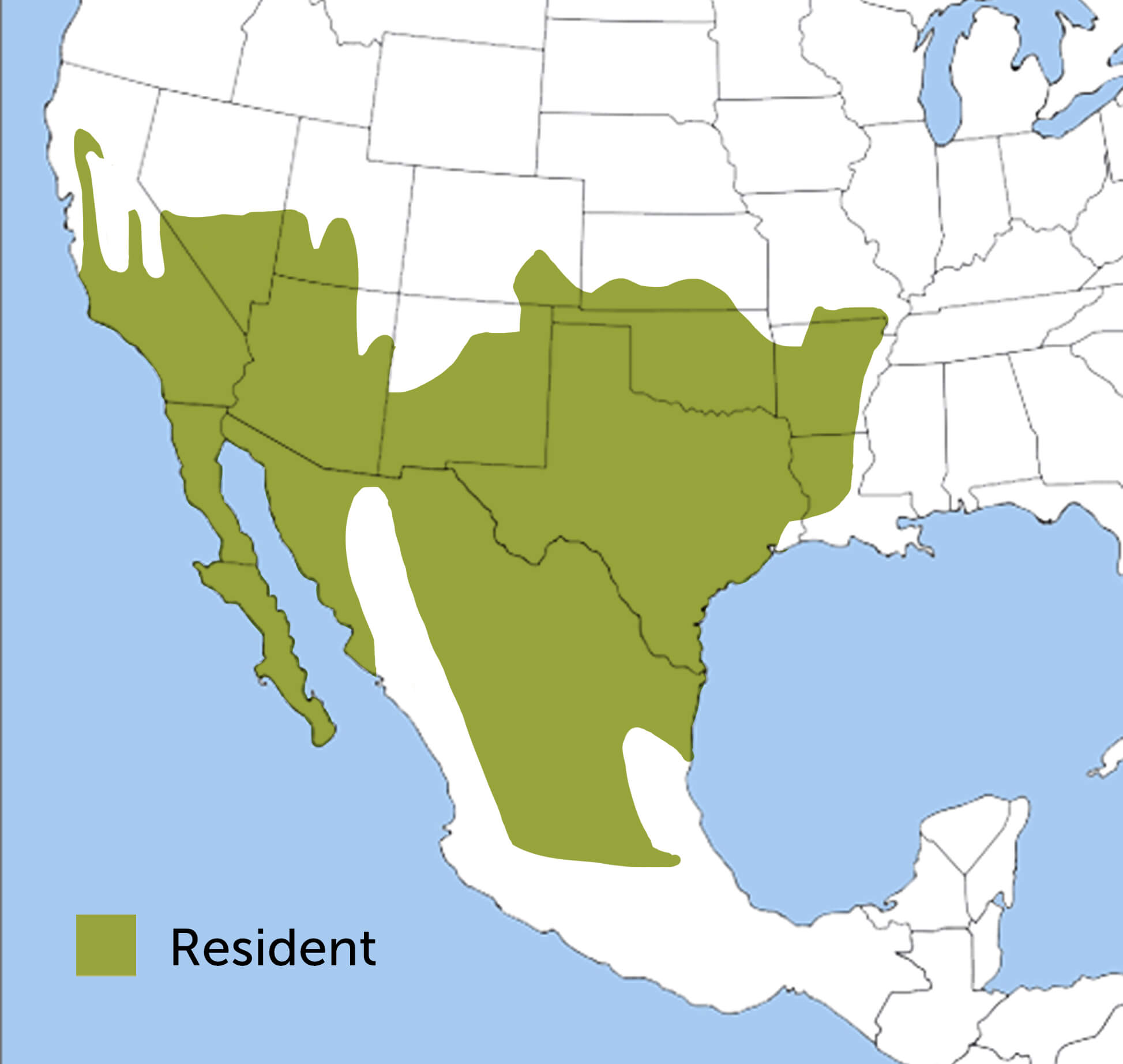
The Greater Roadrunner is resident throughout the southwestern United States and Mexico. Over the last 100 years it has extended its range eastward into Missouri, Arkansas, and Louisiana.
Conservation
The Greater Roadrunner is often illegally persecuted by hunters, who believe that it threatens gamebird populations, particularly quail. The roadrunner is also affected by pesticides, which bioaccumulate in the small reptiles and rodents it preys upon. This bird is often killed in collisions with vehicles, as it hunts near and frequently crosses roads.
ABC's BirdScapes program, which protects habitats across birds' life cycles, continues work to conserve the arid, open habitats that favored by the Greater Roadrunner and a number of other bird species such as the Common Poorwill, Rock Wren, and Pyrrhuloxia.
Get Involved
Policies enacted by the U.S. Congress and federal agencies, such as the U.S. Fish and Wildlife Service, have a huge impact on U.S. birds. You can help shape these rules for the better by telling lawmakers to prioritize birds, bird habitat, and bird-friendly measures. To get started, visit ABC's Action Center.
Living a bird-friendly life can have an immediate impact on the birds around you. Doing so can be as easy as adding native plants to your garden, avoiding pesticides, and keeping cats indoors. To learn more, visit our Bird-Friendly Life page.
American Bird Conservancy and our Migratory Bird Joint Venture partners have improved conservation management on more than 8.5 million acres of U.S. bird habitat — an area larger than the state of Maryland — over the last ten years. This is a monumental undertaking, requiring the support of many, and you can help by making a gift today.







































